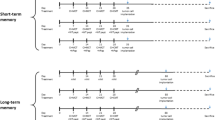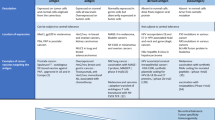Abstract
Tumor cell vaccines have been successful at inducing immunity in naïve mice, but only in a few reports has vaccination alone induced regression of established tumors and, generally, only when they are very small. Clinically, vaccinations alone may not be able to cause regression of established human cancers, which tend to be weakly immunogenic. We hypothesized that pharmacologic ex vivo amplification of a vaccination-induced immune response with subsequent adoptive immunotherapy (AIT) to tumor-bearing animals would be more effective in treatment of these animals than vaccination alone. The 4T1 and 4T07 mammary carcinomas are derived from the same parental cell line, but 4T1 is much less immunogenic and more aggressive than 4T07. Vaccination with either 4T1, 4T1-IL-2, or 4T07-IL-2 was not effective as treatment for established 4T1 tumors. However, 4T1 or 4T07-IL-2-vaccine-sensitized draining lymph node (DLN) cells, activated ex vivo with bryostatin 1 and ionomycin and expanded in culture, induced complete tumor regressions when adoptively transferred to 4T1 tumor-bearing animals. This was effective against small tumors as well as more advanced tumors, 10 days after tumor cell inoculation. Furthermore, as would be required for this approach to be used clinically, vaccine-DLN cells obtained from mice with established progressive 4T1 tumors (inoculated 10 days before vaccination) also induced regression of 4T1 tumors in an adoptive host. In none of these experiments was exogenous IL-2 required to induce tumor regression. The response to tumor cell vaccine can be amplified by ex vivo pharmacologic activation of sensitized T cells, which can then cure an established, weakly immunogenic and highly aggressive tumor that was resistant to vaccination alone.













Similar content being viewed by others
References
Aslakson CJ, Miller FR (1992) Selective events in the metastatic process defined by analysis of the sequential dissemination of subpopulations of a mouse mammary tumor. Cancer Res 52:1399
Awwad M, North RJ (1988) Cyclophosphamide (Cy)-facilitated adoptive immunotherapy of a Cy-resistant tumour. Evidence that Cy permits the expression of adoptive T-cell mediated immunity by removing suppressor T cells rather than by reducing tumour burden. Immunol 65:87
Barth RJ Jr., Mulé JJ, Spiess PJ, Rosenberg SA (1991) Interferon γ and tumor necrosis factor have a role in tumor regressions mediated by CD8+ tumor-infiltrating lymphocytes. J Exp Med 173:647
Bass KK, Mastrangelo MJ (1998) Immunopotentiation with low-dose cyclophosphamide in the active specific immunotherapy of cancer. Cancer Immunol Immunother 47:1
Becker C, Pohla H, Frankenberger B, Schendel DJ, Assenmacher M, Schendel, Blankenstein T (2001) Adoptive tumor therapy with T lymphocytes enriched through an IFN-γ capture assay. Nature Med 7:1159
Berd D, Mastrangelo MJ, Engstrom PF, Paul A, Maguire H (1982) Augmentation of the human immune response by cyclophosphamide. Cancer Res 42(11):4862
Cantrell D (1996) T cell antigen receptor signal transduction pathways. Annu Rev Immunol 14:259
Chamberlain RS, Carroll MW, Bronte V, Hwu P, Warren S, Yang JC, Nishimura M, Moss B, Rosenberg SA, Restifo NP (1996) Costimulation enhances the active immunotherapy effect of recombinant anticancer vaccines. Cancer Res 56:2832
Chang EY, Chen CH, Ji H, Wang TL, Hung K, Lee BP, Huang AY, Kurman RJ, Pardoll DM, Wu T (2000) Antigen-specific cancer immunotherapy using a GM-CSF secreting allogeneic tumor cell-based vaccine. Int J Cancer 86:725
Chin CS, Bear HD (2002) Sentinel node mapping identifies vaccine-draining lymph nodes with tumor-specific immunologic activity. Ann Surg Oncol 9:94
Chin CS, Graham LJ, Hamad GG, George KR, Bear HD (2001) Bryostatin/ionomycin-activated T cells mediate regression of established tumors. J Surg Res 98:108
Chin CS, Nguyen H, Bear HD (2001) Bryostatin 1/Ionomycin (B/I) ex vivo stimulation preferentially activates L-selectinlow tumor-sensitized lymphocytes. Surg Forum 52:262
Chou T, Chang AE, Shu SY (1988) Generation of therapeutic T lymphocytes from tumor-bearing mice by in vitro sensitization. Culture requirements and characterization of immunologic specificity. J Immunol 140(7):2453
Dranoff, G. (1998) Cancer gene therapy: connecting basic research with clinical inquiry. J Clin Oncol 16:2548–2556
Egilmez NK, Jong YS, Sabel MS, Jacob JS, Mathiowitz E, Bankert RB (2000) In situ tumor vaccination with interleukin-12-encapsulated biodegradable microspheres: induction of tumor regression and potent antitumor immunity. Cancer Res 60:3832
Jaffee EM (1999) Immunotherapy of cancer. Ann N Y Acad Sci 886:67
Jensen SM, Hu H-M, Fox BA (2001) Increased IFN-γ secretion by adoptively transferred T cells does not correlate with enhanced anti-tumor therapy. Proceedings of the AACR, 42:502
Jiang XP, Yang DC, Elliott RL, Head JF (2000) Vaccination with a mixed vaccine of autogenous and allogeneic breast cancer cells and tumor associated antigens CA15–3, CEA and CA125—results in immune and clinical responses in breast cancer patients. Cancer Biother Radiopharm 15:495
Kershaw MH, Hsu C, Mondesire W, Parker LL, Wang G, Overwijk WW, Lapointe R, Yang JC, Wang R-F, Restifo NP, Hwu P (2001) Immunization against endogenous retroviral tumor-associated antigens. Cancer Res 61:7920
Kessels HWHG, Wolkers MC, van der Boom MD, Van der Valk MA, Schumacher TNM (2001) Immunotherapy through TCR gene transfer. Nature Immunol 2:957
Li Y, Hellström KE, Newby SA, Chen LP (1996) Costimulation by CD48 and B7-1 induces immunity against poorly immunogenic tumors. J Exp Med 183:639
Lohr F, Hu K, Haroon Z, Samulski TV, Huang Q, Beaty J, Dewhirst MW, Li CY (2000) Combination treatment of murine tumors by adenovirus-mediated local B7/IL12 immunotherapy and radiotherapy. Mol Ther 2:195
Luznik L, Slansky JE, Jalla S, Borrello I, Levitsky HI, Pardoll DM, Fuchs EJ (2003) Successful therapy of metastatic cancer using tumor vaccines in mixed allogeneic bone marrow chimeras. Blood 101:1645
Maguire HC Jr, Ettore VL (1967) Enhancement of dinitrochlorobenzene (DNCB) contact sensitization by cyclophosphamide in the guinea pig. J Invest Dermatol 48(1):39
Morecki S, Yacovlev E, Diab A, Slavin S (1998) Allogeneic cell therapy for a murine mammary carcinoma. Cancer Res 58:3891
Morecki S, Yacovlev E, Gelfand Y, Uzi H, Slavin S (2001) Cell therapy with preimmunized effector cells mismatched for minor histocompatible antigens in the treatment of a murine mammary carcinoma. J Immunother Emphasis Tumor Immunol 24:114
Peng L, Krauss JC, Plautz GE, Mukai S, Shu S, Cohen PA (2000) T cell-mediated tumor rejection displays diverse dependence upon perforin and IFN-γ mechanisms that cannot be predicted from in vitro T cell characteristics. J Immunol 165:7116
Proietti E, Greco G, Garrone B, Baccarini S, Mauri C, Venditti M, Carlei D, Belardelli F (1998) Importance of cyclophosphamide-induced bystander effect on T cells for a successful tumor eradication in response to adoptive immunotherapy in mice. J Clin Invest 101:429
Pulaski BA, Ostrand-Rosenberg S (1998) Reduction of established spontaneous mammary carcinoma metastases following immunotherapy with major histocompatibility complex class II and B7.1 cell-based tumor vaccines. Cancer Res 58:1486
Pulaski BA, Terman DS, Khan S, Muller E, Ostrand-Rosenberg S (2000) Cooperativity of Staphylococcal aureus entertoxin B superantigen, major histocompatibility complex class II, and CD80 for immunotherapy of advanced spontaneous metastases in a clinically relevant postoperative mouse breast cancer model. Cancer Res 60:2710
Rodolfo M, Zilocchi C, Melani C, Cappetti B, Arioli I, Parmiani G, Colombo MP (1996) Immunotherapy of experimental metastases by vaccination with interleukin gene-transduced adenocarcinoma cells sharing tumor-associated antigens—comparison between IL-12 and IL-2 gene-transduced tumor cell vaccines. J Immunol 157:5536
Shu S, Krinock RA, Matsumura T, Sussman JJ, Fox BA, Chang AE, Terman DS (1994) Stimulation of tumor-draining lymph node cells with superantigenic staphylococcal toxins leads to the generation of tumor-specific effector T cells. J Immunol 152:1277
Slansky JE, Rattis FM, Boyd LF, Fahmy T, Jaffee EM, Schneck JP, Margulies DH, Pardoll DM (2000) Enhanced antigen-specific antitumor immunity with altered peptide ligands that stabilize the MHC-peptide-TcR complex. Immunity 13:529
Soiffer R, Lynch T, Mihm M, Jung K, Rhuda C, Schmollinger JC, Hodi FS, Liebster L, Lam P, Mentzer S, Singer S, Tanabe KK, Cosimi AB, Duda R, Sober A, Bhan A, Daley J, Neuberg D, Parry G, Rokovich J, Richards L, Drayer J, Berns A, Clift S (1998) Vaccination with irradiated autologous melanoma cells engineered to secrete human granulocyte-macrophage colony-stimulating factor generates potent antitumor immunity in patients with metastatic melanoma. Proc Natl Acad Sci USA 95:13141
Stanislawski T, Voss R-H, Lotz C, Sadovnikova E, Willemsen RA, Kuball J, Ruppert T, Bolhuis RLH, Melief CJ, Huber C, Stauss HJ, Theobald M (2001) Circumventing tolerance to a human MDM 2-derived tumor antigen by TCR gene transfer. Nature Immunology 2:962
Tsung K, Meko JB, Peplinski GR, Tsung TL, Norton JA (1997) IL-12 induces T helper-1 directed antitumor responses. J Immunol 158:3359
Tsung K, Meko JB, Tsung YL, Peplinski GR, Norton JA (1998) Immune response against large tumors eradicated by treatment with cyclophosphamide and IL-12. J Immunol 160:1369
Tuting T, Storkus WJ, Lotze MT (1997) Gene-based strategies for the immunotherapy of cancer. J Mol Med 75:478
Tuttle TM, Bethke KP, Inge TH, McCrady CW, Pettit GR, Bear HD (1992) Bryostatin 1-activated T cells can traffic and mediate tumor regression. J Surg Res 52:543
Tuttle TM, Inge TH, Bethke KP, McCrady CW, Pettit GR, Bear HD (1992) Activation and growth of murine tumor-specific T-cells which have in vivo activity with bryostatin 1. Cancer Res 52:548
Tuttle TM, Fleming MF, Hogg PS, Inge TH, Bear HD (1994) Low-dose cyclophosphamide overcomes metastasis-induced immunosuppression. Ann Surg Oncol 1:53
Tuttle TM, Inge TH, Wirt CP, Frank JL, McCrady CM, Bear HD (1992) Bryostatin 1 activates T cells that have antitumor activity. J Immunother Emphasis Tumor Immunol 12:75
Tuttle TM, McCrady CW, Inge TH, Salour M, Bear HD (1993) γ-Interferon plays a key role in T-cell-induced tumor regression. Cancer Res 53:833
Winter H, Hu H-M, McClain K, Urba WJ, Fox BA (2001) Immunotherapy of melanoma: A dichotomy in the requirement for IFN-γ in vaccine-induced antitumor immunity versus adoptive immunotherapy. J Immunol 166:7370
Wise JA, Mokyr MB, Dray S (1988) Effect of low-dose cyclophosphamide therapy on specific and nonspecific T cell-dependent immune responses of spleen cells from mice bearing large MOPC-315 plasmacytomas. Cancer Immunol Immunother 27:191
Wittig B, Marten A, Dorbic T, Weineck S, Min H, Niemitz S, Trojaneck B, Flieger D, Kruopis S, Albers A, Loffel J, Neubauer A, Albers P, Muller S, Sauerbruch T, Bieber T, Huhn D, Schmidt-Wolf IG (2001) Therapeutic vaccination against metastatic carcinoma by expression-modulated and immunomodified autologous tumor cells: a first clinical phase I/II trial. Hum Gene Ther 12:267
Zitvogel L, Tahara H, Robbins PD, Storkus WJ, Clarke MR, Nalesnik MA, Lotze MT (1995) Cancer immunotherapy of established tumors with IL-12. Effective delivery by genetically engineered fibroblasts. J Immunol 155:1393
Zou JP, Yamamoto N, Fujii T, Takenaka H, Kobayashi M, Herrmann SH, Wolf SF, Fujiwara H, Hamaoka T (1995) Systemic administration of rIL-12 induces complete tumor regression and protective immunity: response is correlated with a striking reversal of suppressed IFN-gamma production by anti-tumor T cells. Int Immunol 7:1135
Acknowledgement
This work was supported by R01 CA48075 and T32 CA09573 grants from the NCI, NIH, and DHHS.
Author information
Authors and Affiliations
Corresponding author
Rights and permissions
About this article
Cite this article
Parviz, M., Chin, C.S., Graham, L.J. et al. Successful adoptive immunotherapy with vaccine-sensitized T cells, despite no effect with vaccination alone in a weakly immunogenic tumor model. Cancer Immunol Immunother 52, 739–750 (2003). https://doi.org/10.1007/s00262-003-0405-8
Received:
Accepted:
Published:
Issue Date:
DOI: https://doi.org/10.1007/s00262-003-0405-8




